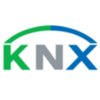 KNX Association
KNX AssociationKNX
What kind of tables does KNX use?
What types of tables and objects are defined with the KNX bus system, and what is their purpose for the automation?
 KNX Association
KNX AssociationWhat types of tables and objects are defined with the KNX bus system, and what is their purpose for the automation?
The KNX bus system does use and support three different tables:
The Group Tables of devices contain all the Group Objects that can be activated on the bus they are present on, where the object table is defined by the manufacturers. Which of the Group Objects or set of them is active is defined by the device parameters.
The size of the Group Table and the Group Objects table cannot be changed by ETS software and is defined by the manufacturers.
Address Tables contain all of the Group Addresses that are assigned to the Group Objects, added to the address tables in the same order as they are assigned to the Group Objects of that device in ETS.
The maximum number of Group Addresses to be added to the address table is defined by the manufacturers, not possible to be changed in ETS software.
The Association Tables contain all the links between the Group and the Address Tables, where the links are added in the same order as the Group Addresses have been assigned to the Group Objects on a device in the ETS software project.
The maximum number of associations is defined by the manufacturer and cannot be changed in the ETS software.
You know a better answer?
The question about KNX Association has already been answered, but there may be a better solution or alternative available by now. If you know it, answer the question now and increase your reputation as an industry expert in our B2B community.
 Related Questions
Related QuestionsWith which knx actuator can the screentronic blind be controlled ?
Hi,
With which knx actuator can the screentronic blind be controlled without using the controltronic actuator ?
Thanks
Non sending group address and Central functions?
I use one group address for central functions with multiple non-sending objects. When I write a value they are only updated after I read them...
How are KNX systems used to control lighting, heating, air conditioning and other functions?
How are KNX systems used to control lighting, heating, air conditioning and other functions?
Was the content helpful to you?